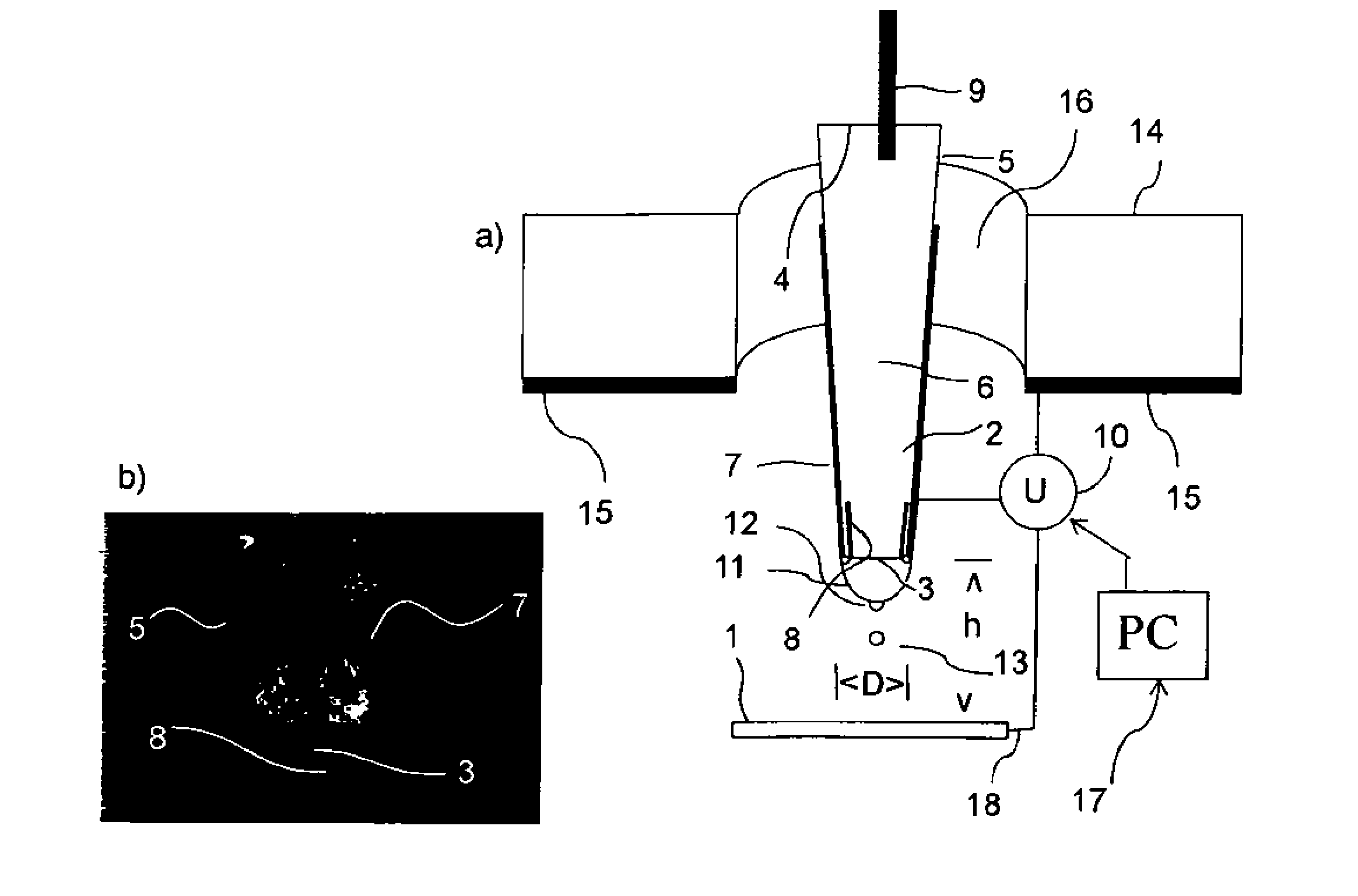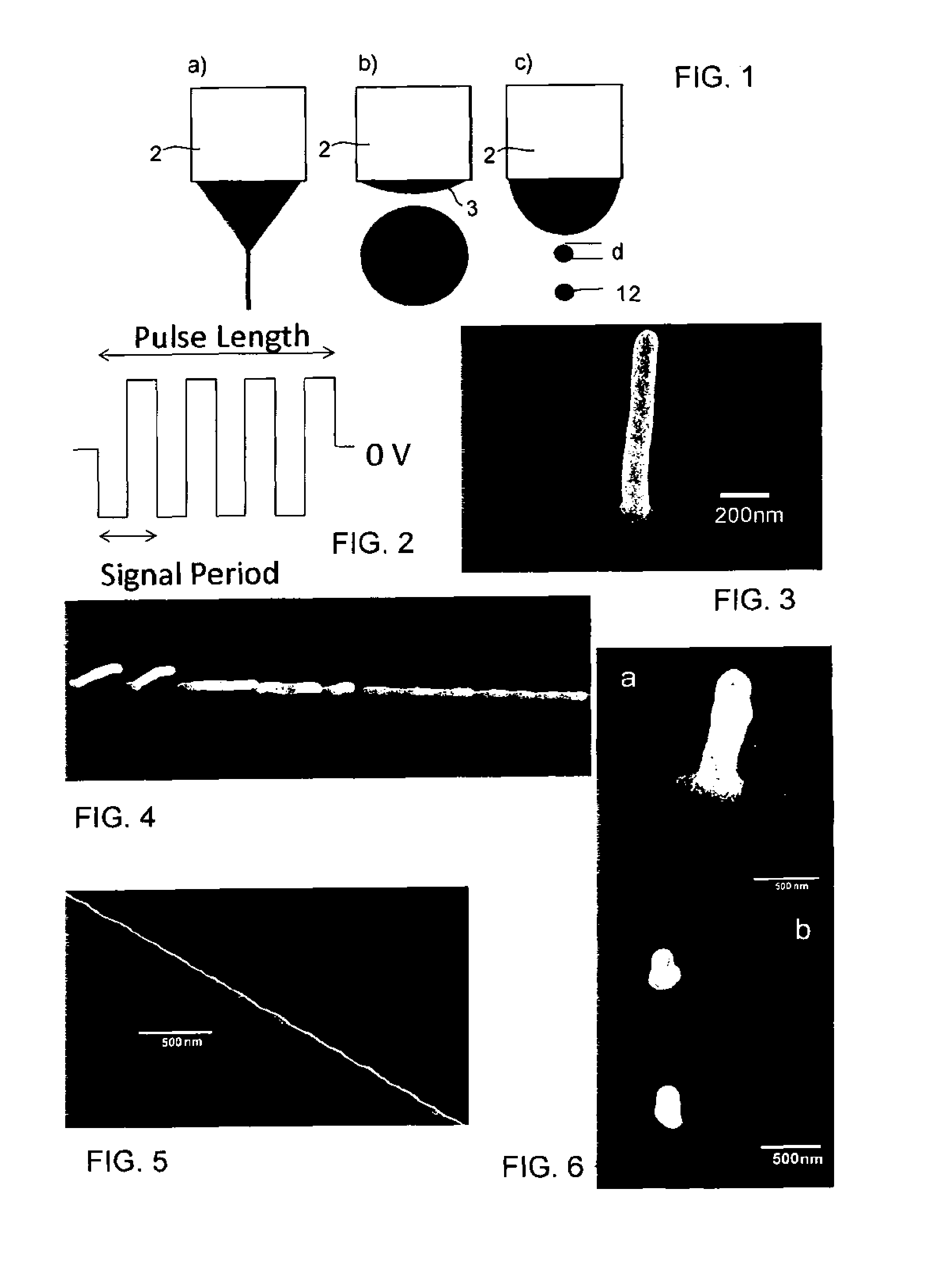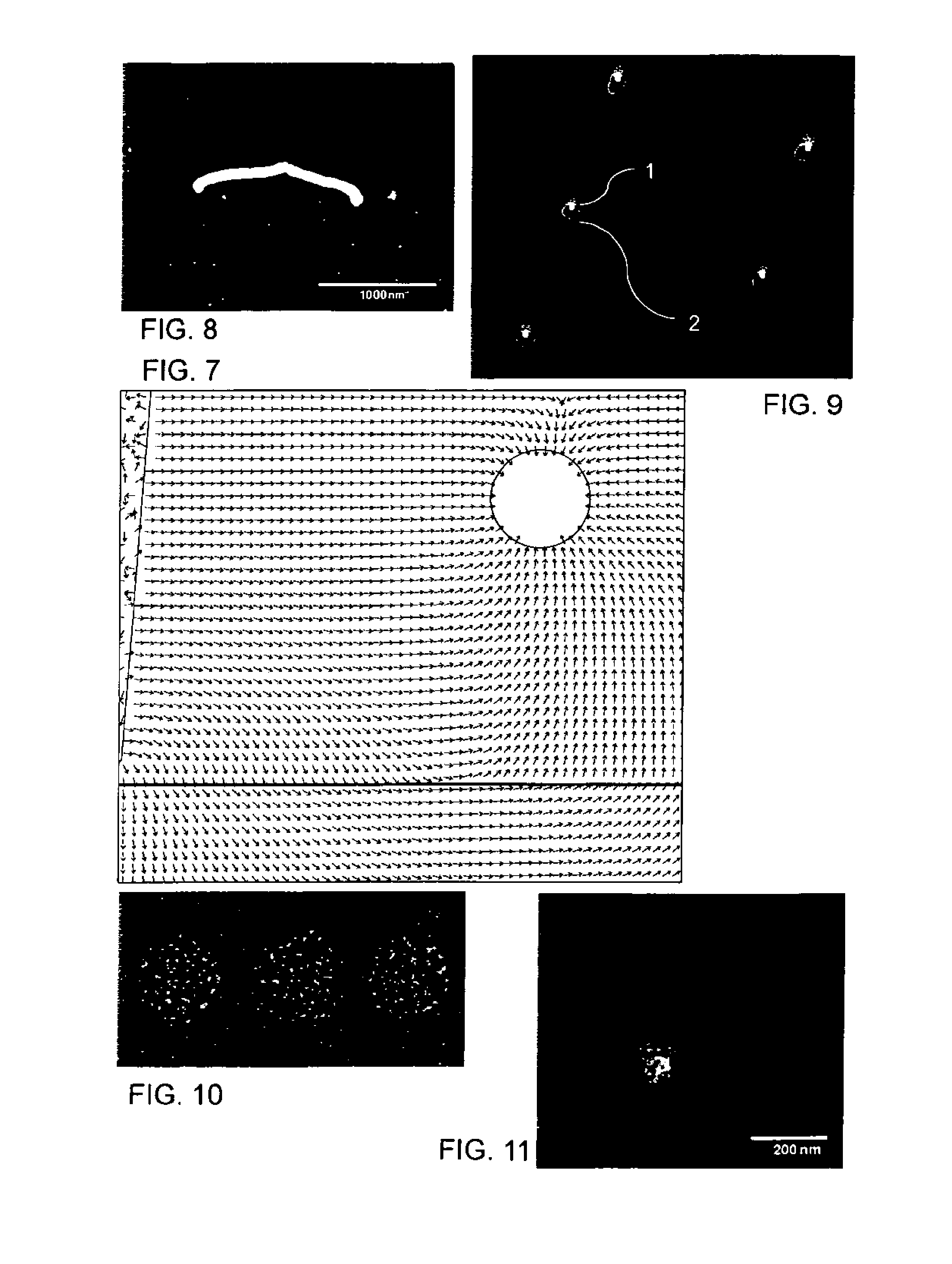Method for nano-dripping 1d, 2d or 3D structures on a substrate
a nano-dripping and substrate technology, applied in the direction of micro-structural device manufacturing, liquid surface applicators, coatings, etc., can solve the problems of wasteful technique, low material saving efficiency, and reliance on extremely expensive materials for coating, and achieve high precision
- Summary
- Abstract
- Description
- Claims
- Application Information
AI Technical Summary
Benefits of technology
Problems solved by technology
Method used
Image
Examples
Embodiment Construction
[0107]The section illustrates the proposed printing of 3D submicron structures. In the setup a gold-coated nozzle is filled with and in electrical contact to an ink. An electrical potential is applied between the nozzle and a counter electrode in and / or on and / or below and / or above a substrate to be printed on. Applying a high enough electrical potential between nozzle and counter electrode results in a regular ejection of monodisperse droplets. The nature and scaling relations of these droplets are considered in this work. Experiments demonstrate that the frequency strongly increases with the applied potential. The droplet diameter strongly decreases and converges to a final value once the charge relaxation time is longer than the time of liquid supply to the small droplet. For the used test system varying the applied potential between 100V and 400V increases the droplet frequency from 60 Hz to 100 kHz while the droplet diameter decreased from 1 micron to less than 100 nm. The mode...
PUM
 Login to View More
Login to View More Abstract
Description
Claims
Application Information
 Login to View More
Login to View More - R&D
- Intellectual Property
- Life Sciences
- Materials
- Tech Scout
- Unparalleled Data Quality
- Higher Quality Content
- 60% Fewer Hallucinations
Browse by: Latest US Patents, China's latest patents, Technical Efficacy Thesaurus, Application Domain, Technology Topic, Popular Technical Reports.
© 2025 PatSnap. All rights reserved.Legal|Privacy policy|Modern Slavery Act Transparency Statement|Sitemap|About US| Contact US: help@patsnap.com



